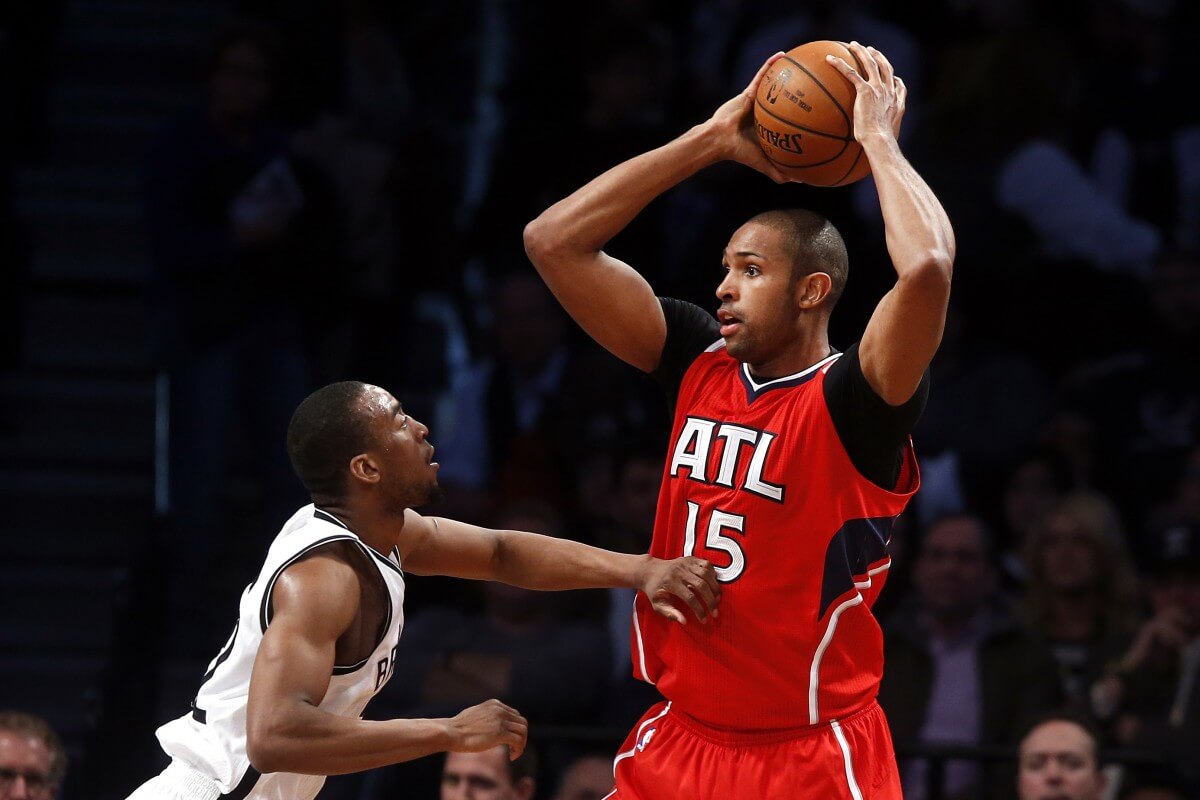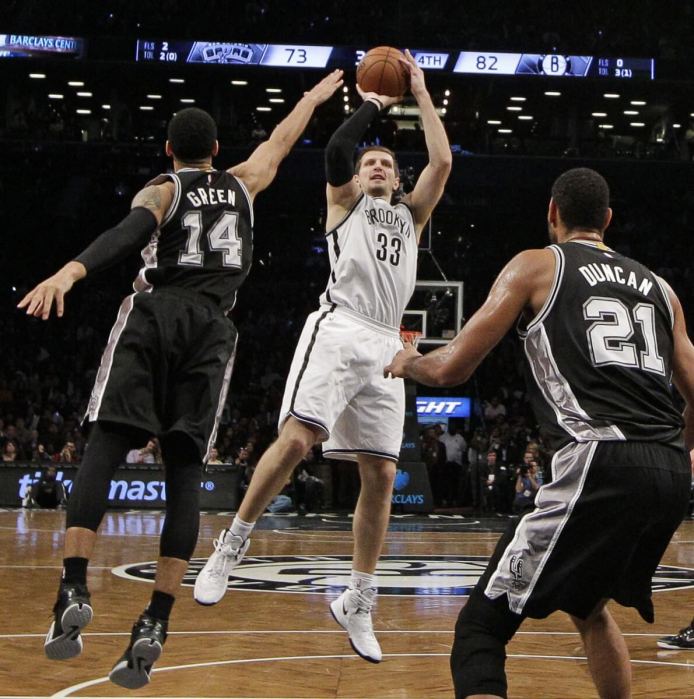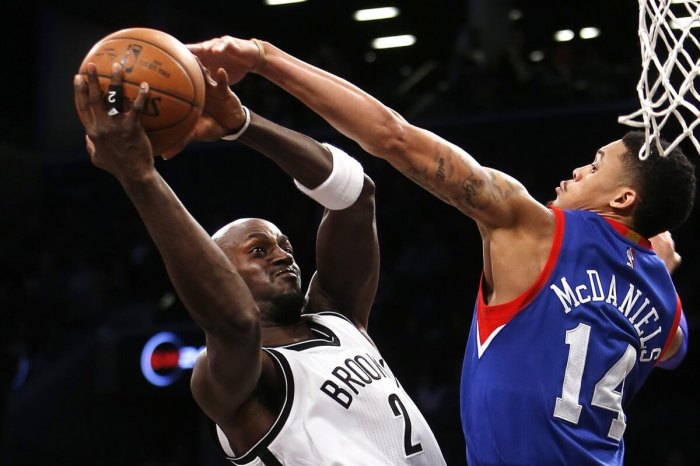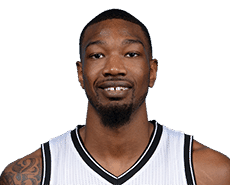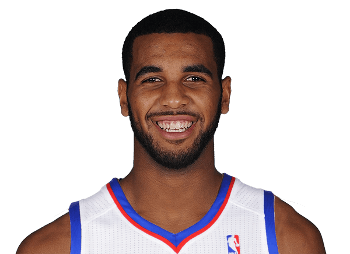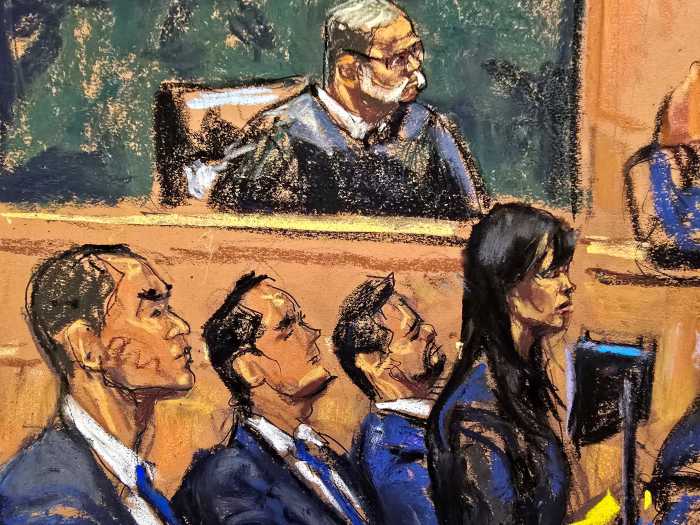The center
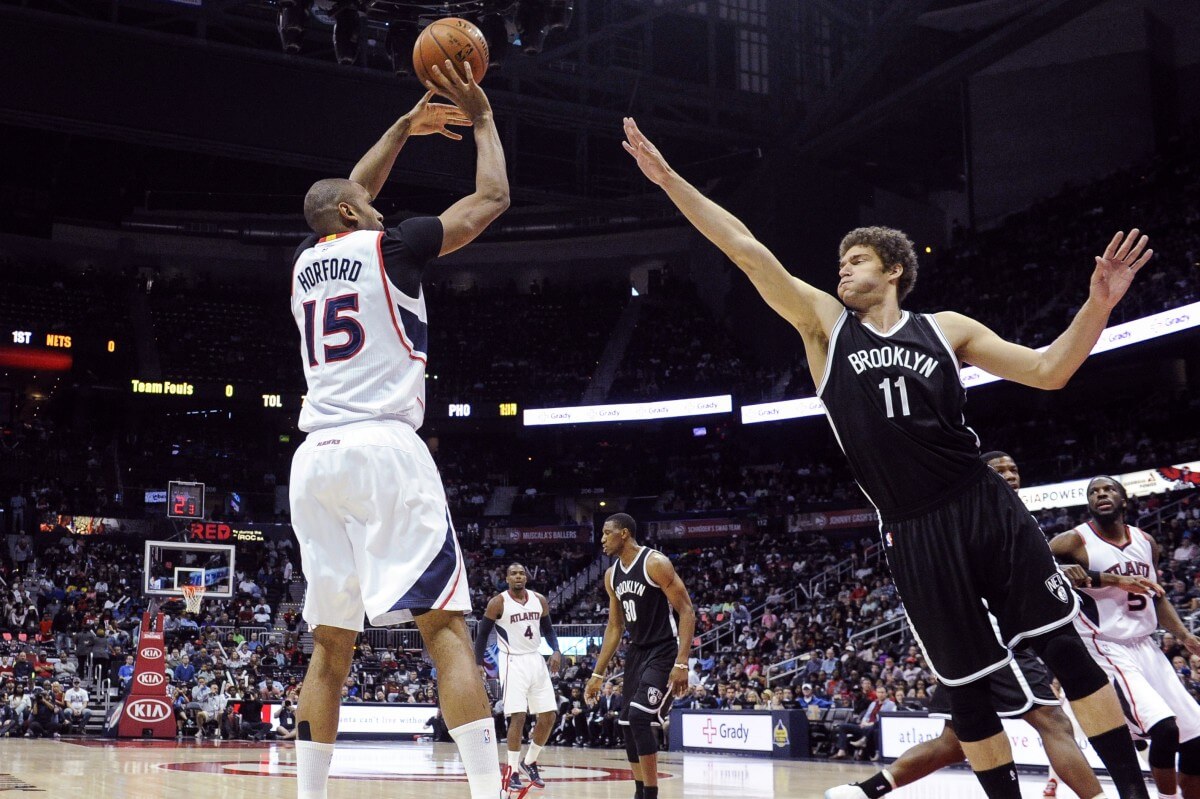
Both teams are solar systems that revolve around their center. Brook Lopez is a natural-born scorer that the Nets close possessions with, while Al Horford is the Tim Duncan-lite[note]I said LITE. Stop throwing things at me.[/note] that everything runs through.
Lopez has his advantages, most of them tied to his size: his listed height of 7’0″ undercuts him two inches, and his 7’6″ wingspan allows him to drop in the easy buckets over the shorter Horford, Mike Muscala, and Pero Antic. Any one of them could bully Lopez out of the paint, but Lopez should be able to score if the Nets can get him the ball and he commits to his inside game and pick-and-rolling[note]Not pick-and-sticking![/note] with Deron Williams. If the Nets can get Horford moving away from Lopez and showing on Nets ballhandlers, there are gaps they can squeeze into:
For what it’s worth, Hollins doesn’t see Lopez’s size alone as a reason they can win. “He’s been bigger all four of the games we’ve played them and it hasn’t worked,” Hollins said, half-joking. “He’s had a couple good games, but we have to go play our game. I don’t think keying on one guy, from an offensive perspective, is going to scare the Hawks. We have to scare the Hawks with our whole offensive scheme, of how we move the ball, how we cut and pass and make them have to play the whole court on defense.”
There’s also the matter of rebounding. Lopez has come into his own as a big-time offensive rebounder in the last two months, hanging around the rim and tipping around put-backs, and has held enough ground on the defensive end.
But the Hawks often don’t rebound by design. Much like the Kevin Garnett-led Celtics that routinely finished near the bottom of the league in offensive rebounding, the Hawks have punted crashing the glass. Korver and Teague, the team’s two starting guards, average under 0.7 offensive rebounds per 36 minutes combined: if you’re not a big man in the paint or on the run towards the basket when the shot goes up, you’re running back to limit fast breaks.
It’s paid off: per NBA.com, the Hawks allowed 11.6 fast-break points per 100 total possessions, which ranked fourth-lowest in the NBA, and allowed a league-stingiest 1.01 points per transition possession, per Synergy. The Nets aren’t an athletic transition team anyway, so the Hawks could look to throw DeMarre Carroll into the paint to throw an extra body at Lopez and Thaddeus Young, or stay the course and maximize how they control the tempo.
But while Lopez is a premier scorer, Horford’s strength lies in his versatility. He can shoot: Horford hit 49.4 percent of his long two-pointers, making him one of the rare players that can turn a long two-pointer into an efficient shot. He can pass: his assist rate of 17.8 ranked him fourth among NBA starting centers, and he rarely turned the ball over. His willingness to pass out of decent looks for great ones gives him a massive edge over Lopez. Can you imagine Lopez, for all his inside talents, making this read with regularity?
Or creating this entire play, from leading the fast break to a spin move in the paint that ends in an assist for a corner 3?
There’s not many do-it-all centers in the NBA, but Horford fits the bill: He can finish inside, draw attention in the corners, and is the natural leader in Atlanta’s culture of selflessness. He’s also a master of the “slip screen,” as detailed in that linked article, and if he senses Lopez sneaking too high to cut off Jeff Teague, he’ll make him pay.
One of the things we discussed on the Glue Guys Playoff Preview Podcast was about the best player in this series. If it’s between Lopez and Horford,[note]That’s assuming you don’t make the worthy argument for a healthy Millsap or Korver.[/note] there’s not much of a contest: Lopez is an elite shot creator, Horford is an elite offensive player.
Edge: Hawks

